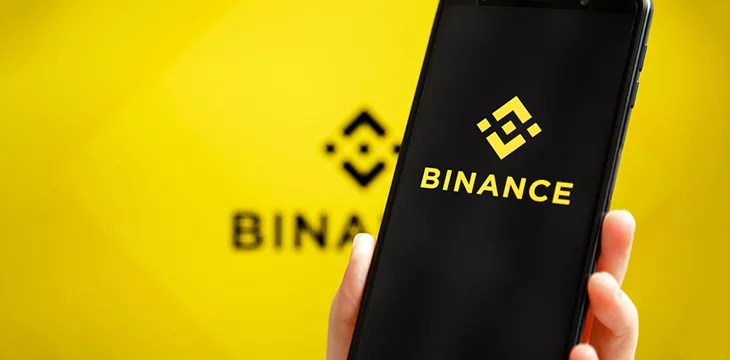|
Getting your Trinity Audio player ready...
|
Binance is taking a scythe to its global workforce as its trading volume tumbles and the digital asset exchange tries to duck an investigation by Canadian regulators.
On Wednesday morning, blockchain sleuth Colin Wu reported that Binance had “started layoffs” that could total as much as one-fifth of its total workforce. A Binance spokesperson later told a crypto news outlet that the company was “letting go of some employees who might not be performing well or who might not be the right cultural fit.”
This spokesperson added that the layoffs were “not a case of rightsizing, but rather, re-evaluating whether we have the right talent and expertise in critical roles … this will include looking at certain products and business units to ensure our resources are allocated properly to reflect the evolving demands of users and regulators.”
It wasn’t three months ago that Binance’s flacks were insisting that the company was “not planning any layoffs” and was actually looking to hire an additional 500 individuals before the end of June. In January, Binance founder Changpeng ‘CZ’ Zhao claimed the company planned to grow its global workforce by as much as 30% in 2023.
But with retail investors burned by 2022’s calamitous collapses of protocols, exchanges, and lenders, ‘crypto winter’ is turning into an ice age, and Binance hasn’t been immune from slumping volume and trader confidence. DefiLama data shows Binance suffered a net outflow of nearly $2.2 billion just in May.
Binance didn’t help matters by ending most zero-commission trades involving the BTC token this spring, a likely indication of its need to maximize revenue wherever possible.
Following Wu’s tweets, Binance’s ‘chief strategy (aka PR) officer’ Patrick Hillmann tweeted a flurry of clarifications, denying that the staff cull was “a cost-cutting measure.” Hillmann claimed the volume of staff cuts could be as low as 5%, but regardless of how many staffers were forced out, “it has nothing to do with ‘market conditions’ today.”
Hillmann further claimed that Binance undergoes a “talent density audit and resource allocation exercise every six months or so,” which is apparently “part of Binance’s secret sauce.” (Other key ingredients of said secret sauce include crime, obfuscation, and an aversion to regulatory oversight. Oh, and nutmeg.)
CZ himself weighed in with his now-standard ‘4’ non-denial-denial, saying the layoffs were actually part of Binance’s “bottom out” program, which involves turfing staff “who are not strong fits with the company.” CZ insisted that Binance remained profitable “on a daily, weekly, and monthly basis” and was “still hiring” non-bottom feeders.
In another apparently unnecessary belt-tightening, Binance is changing its VIP, Standard Referral, and Affiliate programs. The changes will see users ranked VIP 3-9 enjoy a 40% reduction in trading fees on spot/margin trades, but these members will no longer receive referral commissions on spot/margin trades on invitee accounts ranked VIP 3 or above. The changes will take effect next week.
Banking on it
With Binance facing probes in multiple jurisdictions for a wide variety of regulatory shortcomings, the exchange is increasingly finding itself locked out of traditional fiat on-ramps. In CZ’s latest Ask Me Anything session, he suggested Binance might take minority stakes in a traditional bank or two to nudge them in a more “crypto-friendly” direction.
Bloomberg reported this week that Binance was talking to Switzerland’s FlowBank and Lichtenstein’s Bank Frick regarding an arrangement under which certain institutional traders could use these banks to hold collateral for a spot- and derivatives-based margin trading on Binance.
The plan remains somewhat embryonic, with few concrete details emerging. But the gist is that select traders would lock up collateral with these banks, after which Binance would issue stablecoins to these traders for use on the exchange. Binance would be able to generate interest off this collateral by putting it into money-market funds.
These stablecoins would almost certainly be TUSD, the Justin Sun-linked token to which Binance has pivoted following the decline of the Binance-branded BUSD stablecoin. New York regulators forced Paxos Trust to halt the issuance of new BUSD this spring after discovering that Binance was minting its own version of BUSD that wasn’t always backed 1:1 with the U.S. dollar.
N-O Ontario
Binance’s recent skedaddle from the Canadian market isn’t sparing the exchange from unwanted regulatory scrutiny. We now know from Binance’s own filings that the Ontario Securities Commission (OSC) served Binance with an investigation order on May 10, two days before the exchange announced its ‘proactive withdrawal’ from Canada.
Binance’s history in Ontario is not a stellar one, having only pretended to observe the OSC’s 2022 GTFO notice until it got caught telling customers how to evade the restrictions. As recently as two months ago, Binance claimed it was still ‘considering’ its Canadian presence following requests for more company data from the Canadian Securities Administrators.
Binance’s filing indicates that it made up its mind after learning that Canadian regulators wouldn’t allow Binance full freedom to transact in either BUSD or its in-house/unbacked/Chuck-E-Cheese token BNB. Without the ability to flog these magic beans, Binance said its Canadian operations would no longer be “tenable” and thus it decided to “withdraw from operating in Canada” by an unspecified (in the filing) date.
Binance’s application to rebuff the OSC’s probe accuses the OSC of relying too much on allegations made in the civil suit filed against the exchange in March by the U.S. Commodity Futures Trading Commission (CFTC). Binance claims the CFTC’s allegations don’t specifically mention Canada, so the OSC should just ignore all that stuff about money laundering and facilitating terrorist financing already.
Binance has so far resisted the OSC’s “ungrounded” requests for what the exchange’s lawyers called “virtually limitless private data in the hope they may find something untoward.” (We’d argue that the request was based on a rock-solid expectation of finding dirt under CZ’s fingernails, but we digress.)
Binance may be leaving Canada, but we’re sure customers in the Great White North will soon be receiving those infamous ‘you ever hear about VPNs?’ emails. Like the scorpion riding the frog, it’s their nature.
If at first you don’t succeed, Thai thai again
In a rare piece of good news for Binance, Thailand’s Securities and Exchange Commission recently approved the Gulf Binance joint venture’s application to operate a digital asset exchange and brokerage. The approval brings the number of locally licensed exchanges to seven, in a market dominated by local operator Bitkub.
Gulf Binance’s majority partner (51%) is Gulf Energy Development, a major Thai power producer run by local billionaire Sarath Ratanavadi. The parties inked their joint venture deal last year, which included a commitment by the Thai firm to make an unspecified investment in BNB. The Thai-licensed exchange is expected to launch before the year is through.
The regulatory approval came despite Thailand’s SEC filing a criminal complaint against Binance in 2021 for – surprise! – providing services to Thai residents without regulatory approval. Clearly under the influence of its local partner, the infamously headquarters-bereft Binance took the rare step of setting up an office in Thailand last year in a bid to reassure Thai regulators as to its good intentions.
Still, as the majority JV partner, we’d strongly suggest Ratanavadi to keep a close eye on Binance’s activities once this new exchange is up and running. Because running is what CZ will be doing when he’s caught breaking Thai law, while you’ll have nowhere else to go.
Follow CoinGeek’s Crypto Crime Cartel series, which delves into the stream of groups—from BitMEX to Binance, Bitcoin.com, Blockstream, ShapeShift, Coinbase, Ripple,
Ethereum, FTX and Tether—who have co-opted the digital asset revolution and turned the industry into a minefield for naïve (and even experienced) players in the market.

 05-09-2025
05-09-2025 





